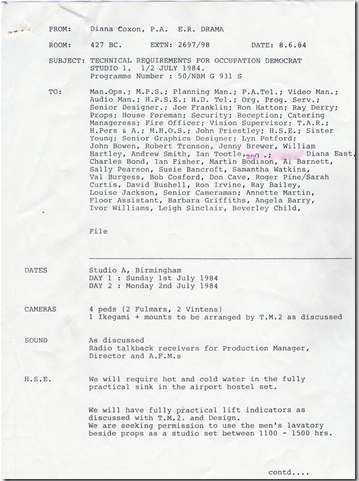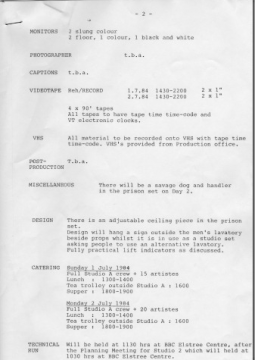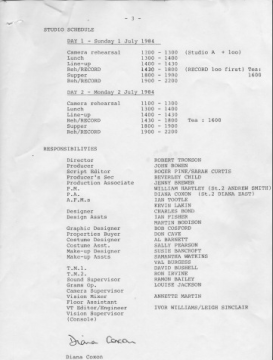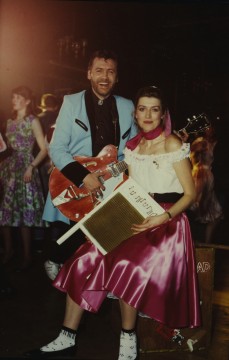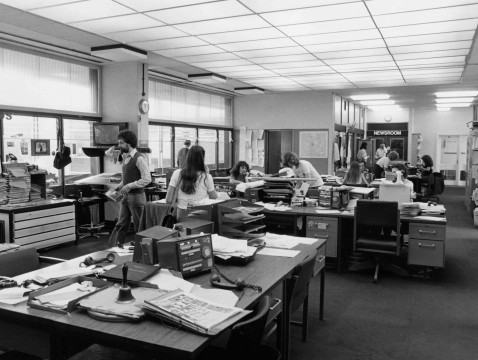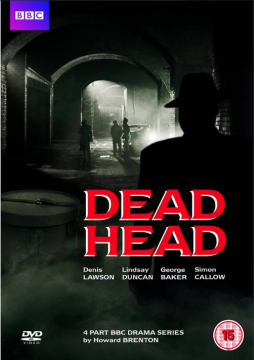
Studio A production gallery 1971, by Ivor Williams (including vision mixer)

Photo by John Kimberley, Studio A colour matching desk
Other Equipment
Most of the rest of the signal chain equipment, Video amplifiers, colour coders, vision mixer etc. were BBC designs, from Designs Department, as the BBC had largely pioneered television equipment in the U.K. from the earliest days. Again to get the best out of it, much of the equipment needed regular adjustments to keep it within specification. The normal day to day drift due to voltage changes or temperature changes, was enough to require correction.
As the colour TV service had only started quite recently, the designs were first generation colour equipment, and basically pushing the limits of what was achievable. The vision mixer was basically a black and white vision mixer, with additional modules to allow it to work with colour signals. One quirk of this first generation vision mixer, was that it truly was a mixer. In the same way that sound mixers added all the signals, so did the vision mixer, so several picture sources could be added together to create several superimposed images. As there were 8 channels, in theory one could have had up to 8 images in the combined output. This required some quite special precautions to prevent the signal exceeding the maximum video level, as well as ensuring that the synchronising pulses and colour burst stayed constant so that the receiving equipment would correctly decode it. Such a requirement for multiple images was not really needed, and most of the time it would just be a transition from one source to another, either a cut, or a fade. I believe simple wipes were also possible, i.e. top to bottom, side to side or diagonal, but that was about as much as could be done at that time. I believe there was also a mode of selecting modulated line drive to one or more cameras in order to create a sort of wavy – dream like transition.
All subsequent commercial vision mixers, were more correctly called vision switchers, as they did not allow for more than two images to be simultaneously displayed, in a mix mode. However they came with a whole lot more transition effects, and it was quite noticeable at the time, particularly with L.E. programmes that the directors would try out all the latest transition effects on their programmes if they thought they could get away with it. They also tended to have more channels so that more picture sources could be permanently wired to particular channels. The old Designs Department mixer quickly ran out of channels if there were 5 cameras and several other sources, like VT, TK, slide scanner and O.B. feed. Some of these had to be preselected, and could not all be present at the same time.
Because all the first generation equipment needed careful tending and not infrequently became faulty, there was a need for a good number of engineers on hand throughout studio recordings and live transmissions. The equipment on outside broadcast units was also subject to vibration, cold and damp, and so needed even more regular intervention, but space was limited, so that meant having fewer more experienced engineers. It was not uncommon for engineers to be repairing equipment minutes before it was needed to be used.
Ray Lee
